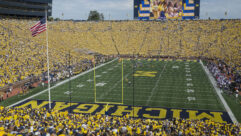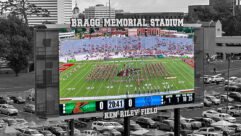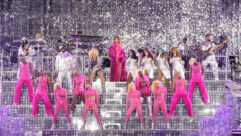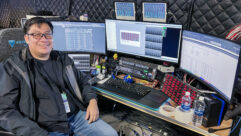
SeaWorld’s Shamu Stadium Makes High-Tech Splash
Sep 27, 2006 8:00 AM

FiberPlex’s LightViper VIS-1832 fiber-optic digital audio transport system has been deployed in San Diego’s recently expanded SeaWorld Shamu Stadium. The venue’s 5,500-seat outdoor stadium is the original home for the performing killer whale shows that have spanned nearly five decades with three generations of “Shamu” whales.
SeaWorld embarked on the most ambitious entertainment project in the brand’s 42-year history with Believe—an all-new show production that blends new killer whale behaviors with elaborate set pieces, music, choreography, and state-of-the-art multimedia. The three Shamu Stadiums, home to the iconic Shamu the killer whale, have a completely new look for the first time in 15 years.
All three Busch Entertainment SeaWorld theme parks (San Diego, San Antonio, and Orlando) installed state-of-the-art, upgraded video and audio systems to heighten guests’ experience. The Shamu show’s sound is a mix of an original pre-recorded music score combined with live, wireless headset microphone origination signals from numerous trainer/performers. The enhanced audio systems are the most sophisticated ever constructed by the firm.
At the center of the new Shamu Stadium’s stage, a new stainless steel set includes four 20ft.-wide video screens that operate independently or can move together to create a single 80ft.-long panoramic screen. Concert sound speaker line arrays from Meyer Sound flank the large video screens to either side of the two-tiered stage. Self-powered, weatherproofed stereo speaker systems located 180ft. from center stage are fed the show’s audio from a Yamaha digital console located at the rear of the stadium. Connecting the two is a LightViper 1832 fiber-optic audio transport system.
The LightViper’s audio stage component is located in an equipment rack directly behind the large LED screens. This audio rack also contains the Meyer speaker systems processor, as well as a Cat-5 network control interface. The LightViper stage box (which includes the analog-to-digital converters) was custom-crafted from a special stainless steel alloy by FiberPlex. Due to SeaWorld San Diego’s harsh saltwater environment (a seven million gallon fresh seawater pool), corrosion resistance as well as total electrical signal isolation for all AV systems were paramount design criteria in this unique venue. For obvious safety reasons, no conventional copper electrical cables of any kind were permitted in the pool performance areas for any of the new AV equipment.
The LightViper’s TAC-4 fiber-optic audio cable runs from the VIS-1832 stage box mounted in the onstage electronics rack, encircles a portion of the stadium seating and terminates at the FOH mix position. The audio console feeds analog return signals into the VIM-1832 mixer box, which are sent back to the LightViper 1832, out of the VIS-1832 returns, and then on to the speaker processor and the Meyer Milo system. The length of the fiber-optic audio cable run is approximately 350ft. Video, intercom, and network control signal electronics are also deployed in separate fiber-optic cable runs.
Platt Design designed the AV systems and installed every component of the sophisticated performance and control systems. The Sierra Madre, Calif.-based design firm’s principal, Bill Platt, has an extensive background in live facilities AV design. Platt’s impressive experience includes a 15-year stint as head of design for the Disney organization’s Creative Entertainment Group. His design work included virtually all of Disney’s theme parks live entertainment venues, from Tokyo to Paris.
Platt was clearly impressed with the performance of the LightViper system, his first experience with the cutting-edge fiber-optic audio transport technology. “The LightViper performs flawlessly; it’s completely transparent, with absolutely no coloration. Initially, I was concerned about how we’d achieve the stringent environmental design spec for the signal transport systems—which was essentially: ‘build a big concert sound system!’—without using any conventional copper cabling. I knew the LightViper system would convert the audio to light, but the mechanical components also had to meet a tough spec. It was great news when FiberPlex said they would make a custom stainless housing for this job. Their custom work was icing on the cake, and they turned it around very quickly too. The LightViper has been very reliable. We simply couldn’t have done this job with a conventional copper audio snake.”
For more information, visit www.lightviper.com.










